
If you’re considering jumping into the world of backyard livestock, knowing which species to commit to can be a challenge. Goats have no equal when it comes to escaping fencing, and a cow might provide more meat and maintenance than your family can handle.
Consider instead the American Guinea Hog.
This backyard pig has a long history as a reliable, friendly meat source sized for the homestead. Best of all, these low-maintenance pigs love to feast on grass, which means your costs stay low if you have some pasture space to spare.
I’m currently building up a small herd of American Guinea Hogs on my hobby farm and starting to understand why this once rare breed is beginning to explode in popularity.
Once you meet these gentle animals, you’ll want to add a few to your own farm setup.
Let’s learn why so many people are realizing why this backyard pig is perfect for the homestead.
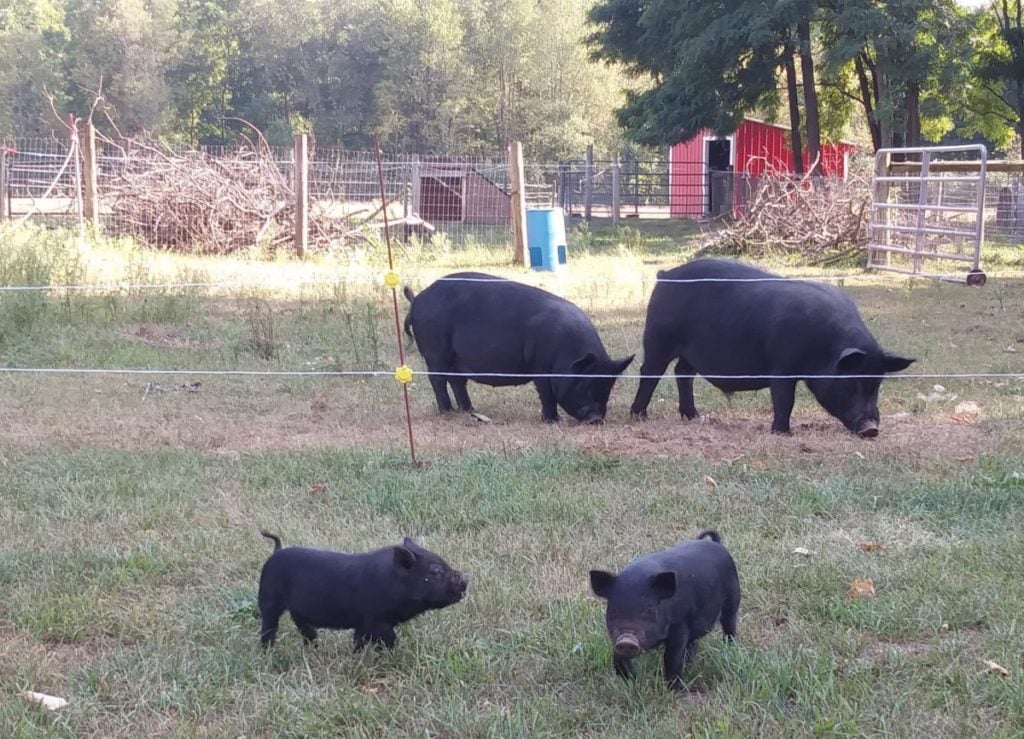
What Are American Guinea Hogs?
Also known as the Acorn Eater, Yard Pig, and Guinea Forest Hog, the American Guinea Hog is a heritage breed of domestic farm pig that was a common sight on homesteads throughout the Southeast over 200 years ago.
Most American Guinea Hogs today are small, black and hairy, though some may also look red or have small white patches near their feet and snout. They range from 150 to 300 pounds, and they’re known for putting weight on too quickly if you aren’t careful to ration their access to grain.
It’s believed that the ancestors of these hogs first came from West Africa and the Canary Islands as part of the slave trade in the late 18th century. Homesteaders sought them out because of their ability to forage their own food, clean out garden beds, and keep their yards free of rodents and poisonous snakes.
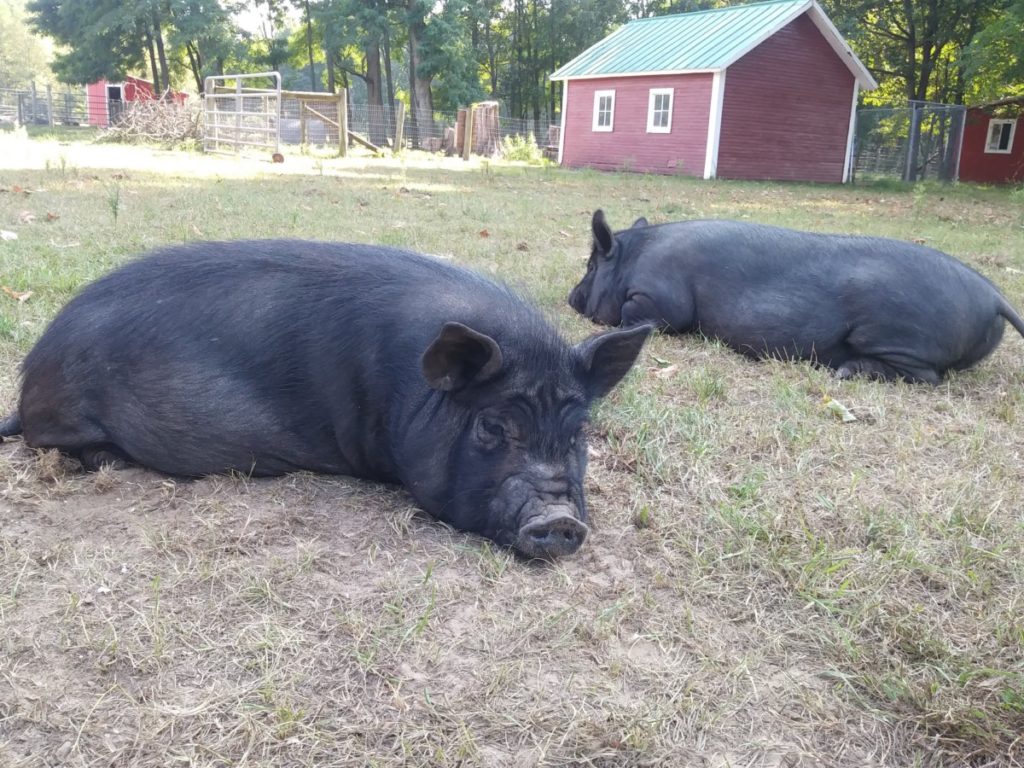
Thanks to their hardiness and efficiency, the American Guinea Hog became a staple meat source for many families.
However, the growth of the commercial hog industry eventually caused heritage breeds to fall out of favor. As people began abandoning the homesteading lifestyle, the American Guinea Hog was all but forgotten.
By the 1990s, fewer than 100 of this once-prized pig still existed in America.
Today, the American Guinea Hog is facing a resurgence with homesteaders and people eager to reconnect with their food supply.
Now, these swine are considered an ideal pig for sustainable setups. Their small size, friendly temperament, exceptional foraging abilities, and—not to be discounted—incredibly tasting pork makes them a prized pig for anyone lucky enough to have one.
6 Reasons Why You Should Consider the American Guinea Hog
Still not convinced you need your own herd of American Guinea Hogs? Here’s what sets this breed apart.
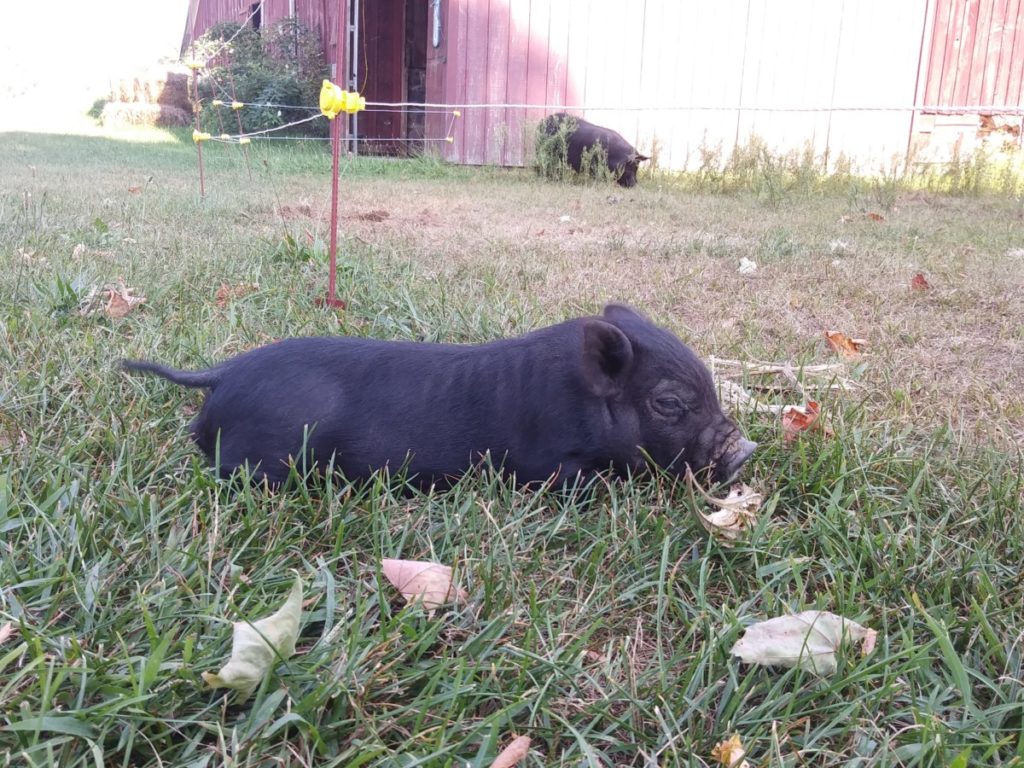
1. Practical Homestead Benefits
Pigs are possibly the most underrated homestead animal from a usefulness standpoint. Hardy and self-sufficient, Guinea Hogs spend their days’ grazing, and their natural rooting behaviors make them perfect for plowing up new garden spaces and keeping unwanted species in check.
We rotationally graze our herd throughout our backyard to keep the grass mowed and add some “natural fertilizer” to keep it vibrant.
2. A “Family-Scale” Pig
While more popular pig breeds like Berkshires put on weight faster than American Guinea Hogs, they can be costly to raise and overwhelming at butcher time. Not everyone has a freezer setup ready to handle 150+ pounds of pork.
Guinea Hogs, in contrast, produce around 60-80 pounds per carcass, which makes them much more manageable for a single-family.
You can rear several litters over a year to provide your family with all the pork it needs. We plan to butcher several Guinea Hogs a season so that we never have more meat on hand than we can store. When our supplies start getting low, we can quickly butcher another pig at home.
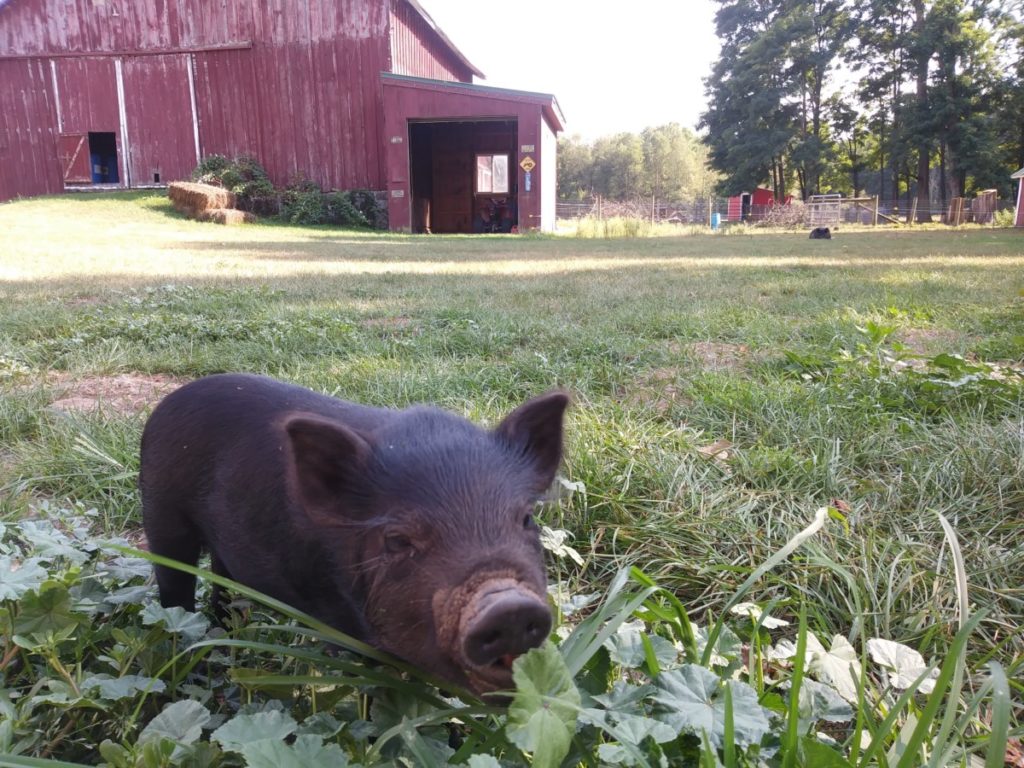
3. Unique Flavor Characteristics
Guinea Hogs are known for their tender meat and firm and abundant fat content, which makes them ideal for lard and sausage production. American Guinea Hog pork stays succulent no matter how much you cook it, and high-end chefs are increasingly seeking it out for charcuterie.
While the invention of Crisco caused lard to fall out of favor, mounting research shows that lard can play a role in a healthy diet. Learning how to render your own lard is one of the best ways to become self-sufficient with your cooking oil supply.
4. A Docile Disposition
Many standard breed pigs have reputations for violence, leading farmers to fear getting too close during feeding time or allowing their other livestock to interact with them.
In contrast, American Guinea Hog breeders select for temperament, which leads to this being one of the friendliest pig breeds you will meet.
Our pigs demand back scratches after feeding time, and the piglets even wander out of their pens to hang out on our patio. And while our sows make stellar protective mothers, we’ve never had issues when we approached the babies.
Even full-grown males are easy to manage, which is why the breed is a popular choice for families with young children.
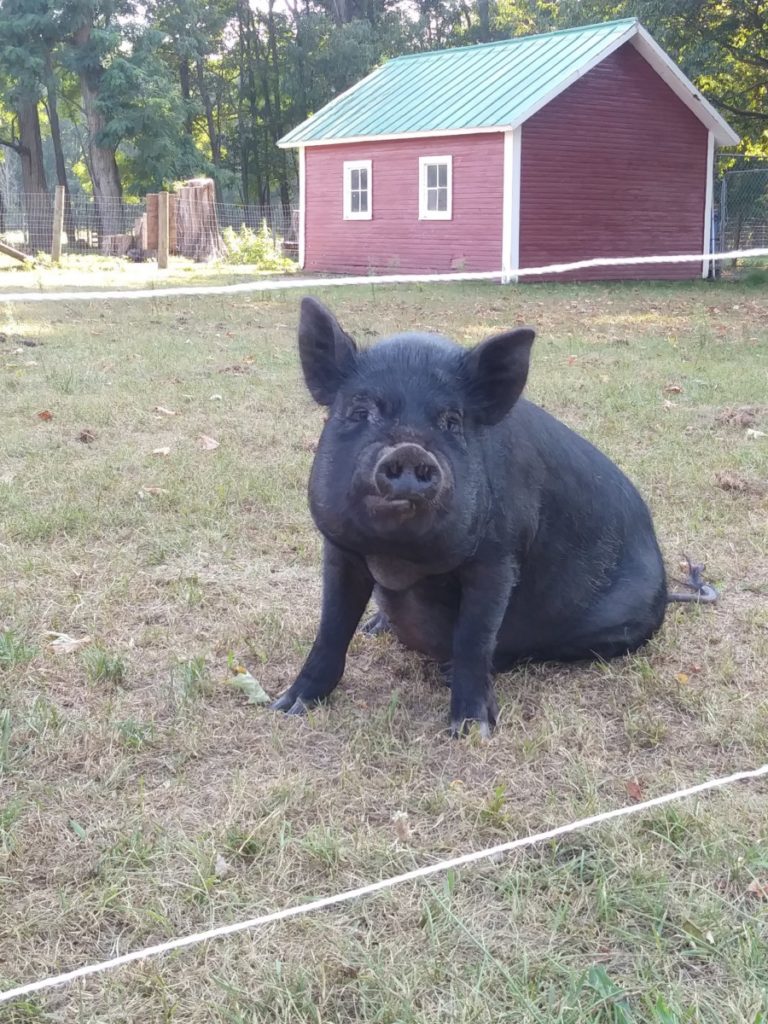
5. Great Use of Pasture Space and Kitchen Waste
Though other heritage pig breeds occasionally graze on grass, few take to it as well as American Guinea Hogs. These pigs happily spend their whole days out in the pasture, and they can be fed with hay throughout the winter. Even better, they adore kitchen scraps and will thrive on any refuse from your garden as well.
Our three adult hogs are pastured full-time and are fed on our food scraps in the summer. They only require about fifty pounds of supplemental grain per month for the rest of the year. This makes the cost of raising them negligible for the value they provide us.
6. Easy To Sell to Other Enthusiasts
The growing acclaim of the American Guinea Hog means that there is potential to set up a profitable venture selling piglets to other homesteaders. Their unique temperament and small size make them the perfect starter pig for anyone who wants to try their hand at homegrown pork.
How To Care for American Guinea Hogs
Now that you’re convinced an American Guinea Hog is a pig worth pursuing, let’s look closer at their care requirements.
Food and Water for American Guinea Hogs
As with all livestock, American Guinea Hogs require constant access to fresh water. Some people supply it in water tanks or even kiddie wading pools. What works best for us are food-grade water barrels outfitted with a pig nipple waterer. This lets the pigs access their water when needed and prevents them from making it filthy.
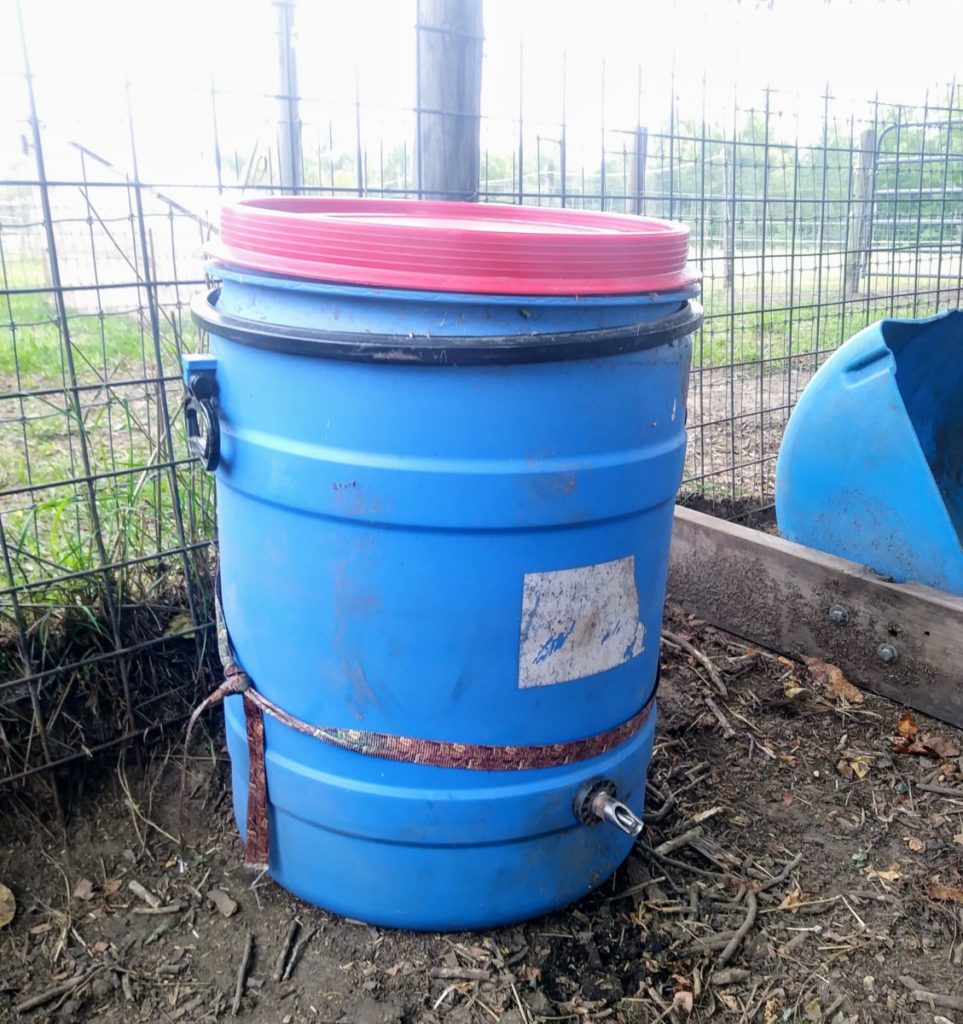
Most Guinea Hog owners keep their pigs out of pasture so they can feed themselves. You’ll need to supplement this grass in some form, usually through kitchen scraps and commercial pig feed.
Plan on each pig needing approximately 4% of their body weight in food each day. That comes to about 5-6 pounds for a 150-pound pig. The longer you keep your pigs, the better sense you’ll get about how much food your property provides for them and how much you need to supplement.
Just keep in mind that overfeeding Guinea Hogs can lead to problems, as they can quickly pack on the pounds, become overweight, and suffer from health and fertility problems.
Pig Pasture Requirements
Your pasture requirements for American Guinea Hogs depends on both your herd size and the quality of your land. A rule of thumb is that you’ll need about two acres per pig if using a permanent pasture, while up to ten pigs can subsist on an acre if you practice rotational grazing.
American Guinea Hog Fencing
Personal experience has proven that American Guinea Hogs don’t require much in regards to fencing, so long as they have plenty of food, water, and shade inside their pen.
We use three strands of high tensile electric fencing around our pastures, and a few accidental shocks on the ears were all it took to stop our herd from testing the boundaries. This fencing works for us because it’s portable and lets us fence off different parts of our pasture for an intensive rotational grazing system.
Other homesteaders do well with woven wire fencing, hog panels, electric mesh fencing, and even homemade fences made from recycled pallets.
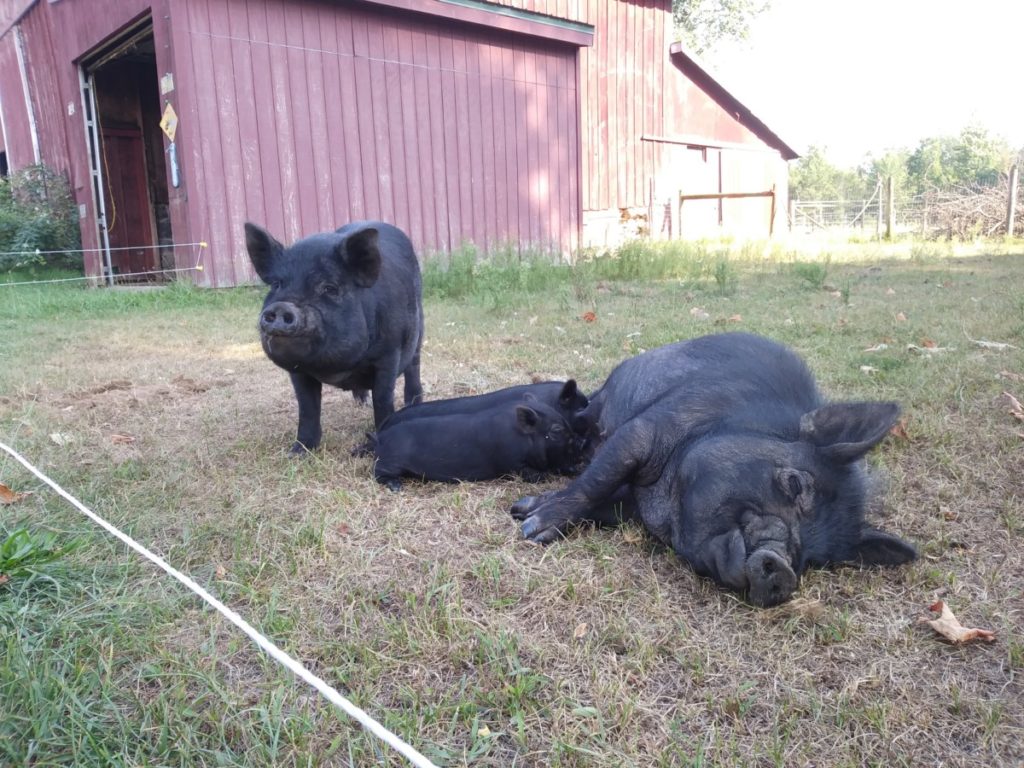
Shelter for American Guinea Hogs
All pigs require a comfortable and secure shelter that offers shade and bad weather protection. Some owners (including us) use calf huts for this small-sized breed, though traditional half-dome pig shelters also work well.
Plan on ten square feet per pig of shelter space, and ensure it contains deep straw bedding for them to root in. One benefit to pigs compared to goats or horses is that they leave their shelters to go to the bathroom, which makes your maintenance responsibilities easier.
Saying that, our pigs tend to spend most of the warmer months snoozing under trees or beneath trailers parked in their pasture space. They also love any opportunity to cool down by wallowing in mud holes.
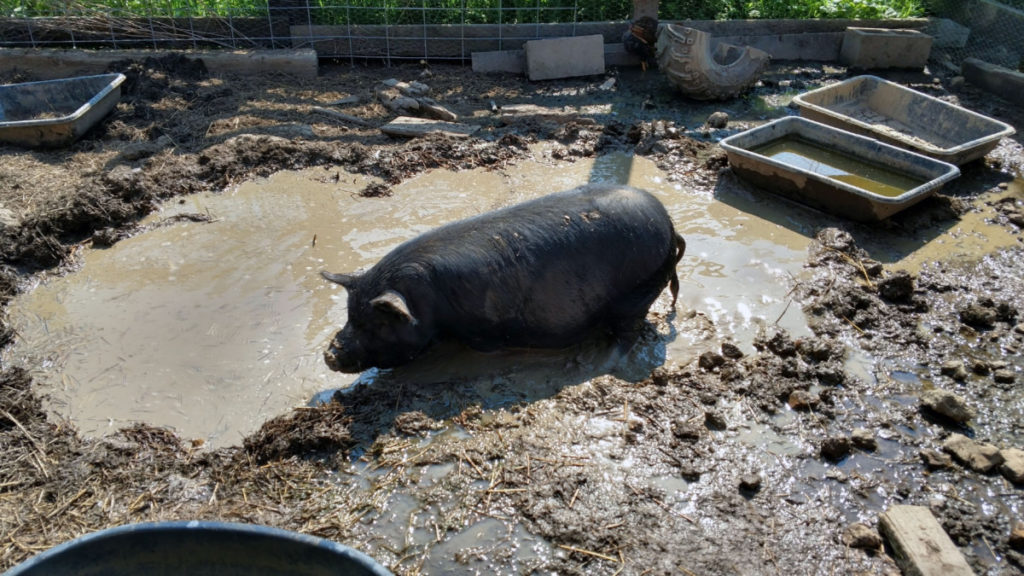
A variety of lounging options is clearly appreciated.
Breeding American Guinea Hogs
Though it’s possible to purchase a few pigs and raise them to butcher weight, many American Guinea Hog owners get a lot of enjoyment from breeding their pigs and raising or selling the offspring.
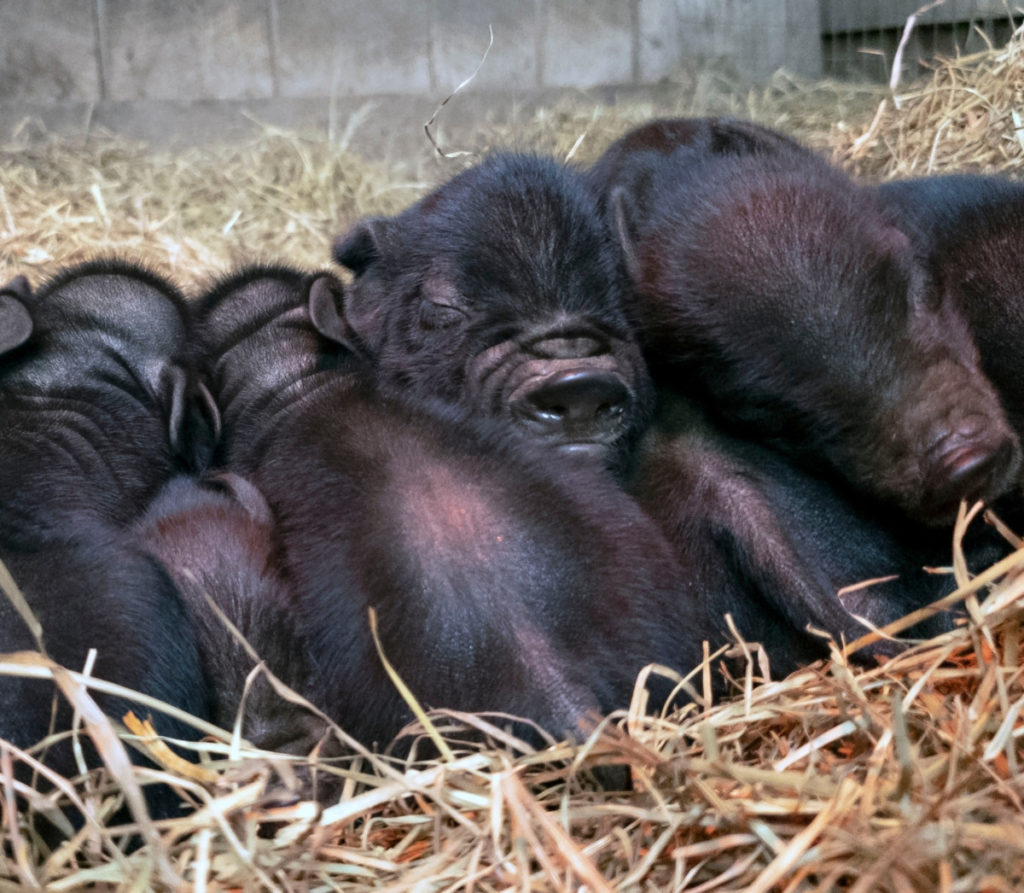
Male and female Guinea Hogs reach fertility around eight months old, and they can have up to 2.5 litters per year. You want to breed females within their first two years. Otherwise, they will struggle to conceive in the future.
A Guinea Hog gestation is about 114 days or just under four months. Pregnant hogs will slowly plump up over this period, and we confirmed our sow’s pregnancy by feeling for baby kicks around the two-month mark.
You can tell your sow is ready to labor once she starts building up a nest in her pen from straw and other found materials. Most will also start secreting milk about 24 hours beforehand. In most cases, Guinea Hogs need minimal assistance throughout the birth process.
Each piglet is born with eyes wide open to allow for easy navigation to mom’s nipples for nursing. They start around one pound and will grow quickly, until they are close to ten pounds at their two-month weaning time.
Expect a sow’s first litter to contain between three and five piglets, and they may increase to eight or more after subsequent breeding sessions. The average litter size for an established breeder is about six.
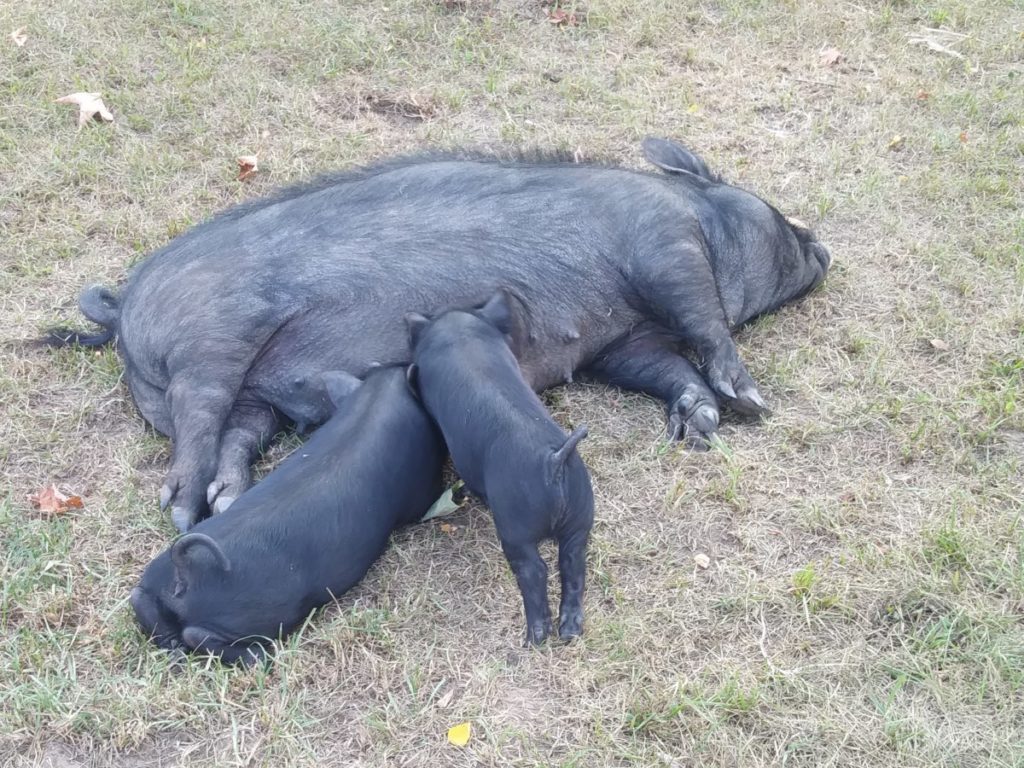
Butchering American Guinea Hogs
Most American Guinea Hogs reach full size at two to three years old, though you can butcher before that to maximize your feed costs to meat ratio. Plan to get approximately 50% of the animal’s carcass weight as traditional meat cuts, so a 120-lb pig will generate 60-lbs of pork.
Due to their smaller size, many people can manage butchering Guinea Hogs at home. Though the process seems daunting at first, we’ve found that Monte Burch’s book, The Ultimate Guide to Home Butchering gave us the confidence to tackle the process at home with the help of a few experienced friends.
If that’s not your comfort level, you should be able to find a local butcher to handle your pig for you. In this case, it’s likely best to butcher a whole litter at once rather than the staggered method preferred by DIY enthusiasts.
Best Resources for Learning More About American Guinea Hogs
This article only begins to cover the vital information about this incredible breed. You can dive deeper into the research by joining the American Guinea Hog Association.
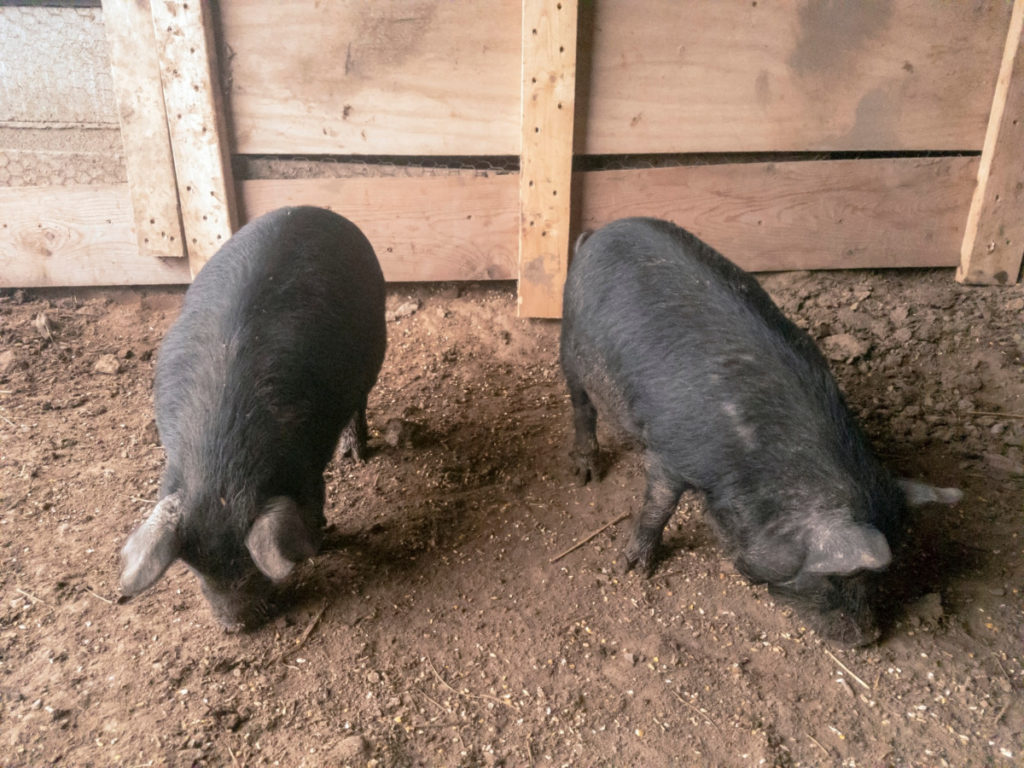
The AGHA is devoted to preserving this pig’s population by connecting breeders to maximize genetic diversity and by educating the public about the value of heritage breeds.
It also offers an excellent resource for finding Guinea Hogs for sale near you.
Another way to familiarize yourself with the history of this plucky breed is Cathy Payne’s book, Saving the Guinea Hogs: The Recovery of an American Homestead Breed. Here, you’ll learn why this backyard pig is so beloved by those who know it, and what it took to bring this breed back from the brink of extinction.
Interested in learning more about raising pigs in general? Storey’s Guide to Raising Pigs is the AGHA’s top recommended resource for getting up to speed.
American Guinea Hogs are making a comeback these days, and for a good reason. Consider adding these friendly farm animals to your homesteading operation, and you might be amazed how quickly you convert your friends to do the same.

Get the famous Rural Sprout newsletter delivered to your inbox.
Join the 50,000+ gardeners who get timely gardening tutorials, tips and tasks delivered direct to their inbox.

